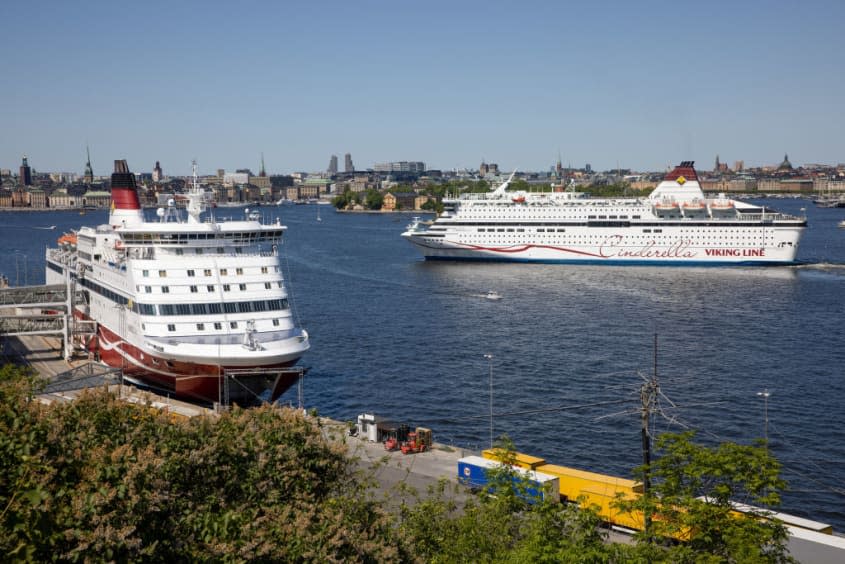How the cruise industry is pivoting to sustainability

The cruise industry is back and booming. By the end of 2023, an estimated 31.5 million passengers will travel on a cruise ship, according to Statista, and that figure exceeds even pre-pandemic numbers. The sector is expected to keep growing exponentially, with Statista estimating nearly 40 million annual cruisers by 2027.
With this uptick, though, comes renewed questions about the cruise industry's negative effect on the environment. Cruise ships are "an environmental disaster," Popular Science reported, with the behemoth ships "having a massive effect on the climate." One study from the University of Exeter showed that the average cruise ship produces the same amount of carbon emissions as 12,000 cars.
While other transportation sectors, like air travel, are working to become more eco-friendly, cruise ships have long been the bane of environmentalists. Groups like Friends of the Earth claim that "everything that cruise ships come in contact with are likely to be harmed along their journey." However, the industry has begun working on alternatives to their fuel-guzzling vessels, and is exploring ways to make voyages by ship both enjoyable and green.
How bad are cruise ships for the environment?
Traditional diesel-powered cruise ships pump out massive quantities of toxic emissions, experts say. While the entire shipping industry emits "2.9% of global carbon dioxide emissions," cruise ships "produce more carbon dioxide annually on average than any other kind of ship due to their air conditioning, heated pools and other hotel amenities," The Associated Press reported, citing a study from the European Federation for Transport and Environment.
Then there are the passengers themselves. A person's carbon footprint "triples in size when taking a cruise," Forbes said, and "the emissions produced can contribute to serious health issues." The scale of cruise ships causes a tremendous amount of garbage to accumulate onboard, and "cruise ships have been caught discarding trash, fuel, and sewage directly into the ocean," Forbes added.
Many resort towns that welcome cruise ships have been directly affected by pollution from the vessels, and there has been a purported rise in medical problems in some of these areas. In the French city of Marseille, for instance, shipping pollution "is estimated to account for up to 10% of the city's air pollution problem," The Guardian reported. One man who lives above the ship-docking area in Marseille has "noticed that the cancer cases here began emerging in the years after the cruise ship boom, as the ships got bigger and more arrived," he told The Guardian.
How are cruise lines reacting?
Many companies within the industry are attempting to pivot to sustainability, and a variety of greener options have been proposed. Nearly every cruise line "is investing in green initiatives, from looking at carbon footprint to refining emissions," Colleen McDaniel, editor-in-chief of Cruise Critic, told CNN.
One of the key aspects of the shift is an attempted move toward alternative fuel sources. Industry trade group Cruise Lines International Association (CLIA) has committed to net-zero carbon emissions by 2050. Two main alternates are battery and hydrogen-powered ships. Despite the well-publicized danger of hydrogen vehicles, "more than 15% of cruise ships debuting in the next five years" will be equipped with hydrogen fuel cells or battery incorporations, CLIA said, with Stanford University professor Marc Jacobsen telling CNN they are "far cleaner solutions" for ships.
Norwegian cruise line Hurtigruten has said it will no longer build fossil fuel-based ships, and is attempting to craft the world's first zero-emission liner. The ship will operate on batteries that "would allow it to run for well over 300 miles before recharging," Time reported. To maximize the ship's range before charging, Hurtigruten "is exploring using underwater maneuvering jets that can retract into the hull to cut drag," and will potentially be "adding sails and solar panels to harness extra power." The company told Time will have a final design for the ship by 2025, with plans to have it water-ready by 2030.
Other initiatives include onboard changes, and "most lines have reduced or eliminated single-use plastics aboard," Travel + Leisure noted. "Waste heat recovery systems are allowing ships like those in the Disney Cruise Line fleet to reduce water usage," the outlet added, and "many cruise lines are also making investments in big-picture sustainability efforts."
You may also like
Russia reportedly tried to assassinate a high-value CIA asset in Miami
5 theories for why Trump kept boxes of secret documents
Trump shrugs off large number of his former Cabinet officials who don't want him reelected

